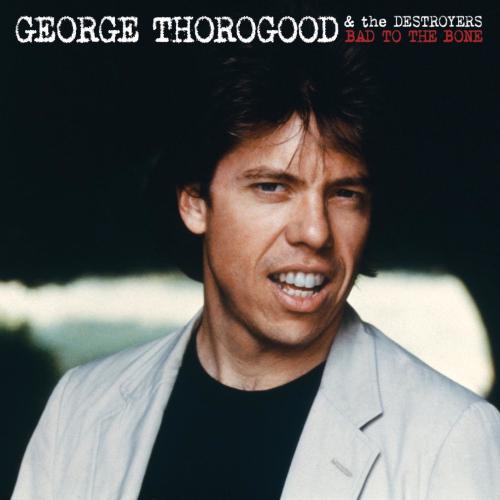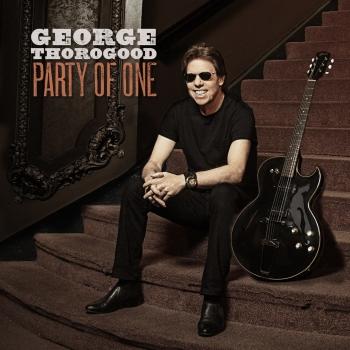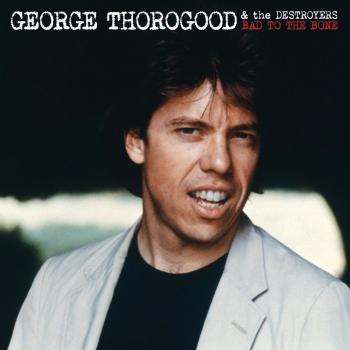
Bad to the Bone (Remastered) George Thorogood
Album Info
Album Veröffentlichung:
1982
HRA-Veröffentlichung:
02.01.2018
Das Album enthält Albumcover
Entschuldigen Sie bitte!
Sehr geehrter HIGHRESAUDIO Besucher,
leider kann das Album zurzeit aufgrund von Länder- und Lizenzbeschränkungen nicht gekauft werden oder uns liegt der offizielle Veröffentlichungstermin für Ihr Land noch nicht vor. Wir aktualisieren unsere Veröffentlichungstermine ein- bis zweimal die Woche. Bitte schauen Sie ab und zu mal wieder rein.
Wir empfehlen Ihnen das Album auf Ihre Merkliste zu setzen.
Wir bedanken uns für Ihr Verständnis und Ihre Geduld.
Ihr, HIGHRESAUDIO
- 1 Back to Wentzville 03:27
- 2 Blue Highway 04:42
- 3 Nobody But Me 03:25
- 4 It's a Sin 03:30
- 5 New Boogie Chillen 04:59
- 6 Bad to the Bone 04:56
- 7 Miss Luann 04:09
- 8 As the Years Go Passing By 04:59
- 9 No Particular Place to Go 03:56
- 10 Wanted Man 03:10
Info zu Bad to the Bone (Remastered)
George Thoroughgood first released "Bad to the Bone" in 1982. The disc was his major label debut, but little had changed from his previous approach: the album was still full of the straight-ahead hard-hitting blues-based rock his following had come to expect. Not surprisingly, little about that approach has changed in the decades following, which is one of the reasons the 2007 reissue still sounds relevant. The sound of his band, the Destroyers, can still peel paint, and the covers of Albert King, Jimmy Reed, and John Lee Hooker are full of bar-band bravado. Naturally, the title track, which has grown into an FM radio classic over the years, still shines, as does Thoroughgood's stinging slide work.
"The Destroyers have been called a glorified bar band, yet they deserve credit for introducing '80s mainstreamers to early rockers such as Chuck Berry and Bo Diddley. They also reintroduced classic blues forms to rock radio, only in a little more electrified form. Hell, they even electrified Hank Williams's "Move It On Over." The aforementioned artists are all represented on this compilation, which in many ways also displays how much Thorogood's songs owe to the originals. The Thorogood-penned title cut, for instance, owes an unmistakable debt to Bo Diddley (who appeared in the video). And when Thorogood sandwiches John Lee Hooker's "One Bourbon, One Scotch, One Beer" between his own "I Drink Alone" and "If You Don't Stop Drinkin'," it tough to miss the connection. If you buy only one Thorogood album, this should be it." (Bill Holdship)
George Thorogood, vocals, guitar
Jim Suhler, vocals, guitar
Buddy Leach, saxophone
Hank Carter, saxophone
Jeff Simon, drums
Recorded 1981–1982 at Dimension Sound Studios, Boston MA
Produced by The Delaware Destroyers
Digitally remastered
George Thorogood
In 1973, a barely-out-of-his-teens Wilmington guitarist piled his gear into the drummer’s Chevy van to play their very first gig at a University of Delaware dorm. More than 4 decades, over 8,000 live shows, and some 15 million albums sold worldwide later, that same maverick guitar-slinger is still making electrifying music, still thrilling audiences, and still the most bad-to-the-bone performer in rock.
It’s 2016, and George Thorogood & The Destroyers are Badder Than Ever.
For George and his longtime band – Jeff Simon (drums, percussion), Bill Blough (bass guitar), Jim Suhler (rhythm guitar) and Buddy Leach (saxophone) – their new Badder Than Ever Tour is indestructible proof that staying true to yourself and the music can still mean something. And with a catalog of classics that includes “Who Do You Love”, “I Drink Alone”, “One Bourbon, One Scotch, One Beer”, “Move It On Over”, “Bad To The Bone” and more, being able to share it with audiences is what will always matter.
“When I was 16, I was going to school and playing Little League but nothing felt comfortable to me,” George says. “The first moment I picked up the guitar, it felt so right that it almost scared me. The fact that I couldn’t sing, play or write a song didn’t matter. I’d learn to do all that soon enough. But by having a knack for this thing and feeling relaxed doing it, I knew I was halfway home. I love to perform live, and I’m lucky to be able to do it on a level that our music and reputation have taken us to. To this day, I consider my job description to be ‘live rock performer’.”
Surprisingly, Thorogood began his career as a solo acoustic act. “I was more of a Robert Johnson/Elmore James type country-blues player,” he explains. “I wasn’t very good at it, but I’d gotten enough feedback from artists like Brownie McGhee and Willie Dixon who thought I had something going. But I knew I needed more.” George called high-school friend and drummer Jeff Simon, and with the addition of a bass player – as well as Jeff’s van – the electric trio soon graduated from basement rehearsals to local gigs. “We knew there was still time for one supercharged boogie-blues combo to make it. We relocated to Boston, and toured New England and the Delaware Valley non-stop. Crowds loved us. The acts we were opening for, like Muddy Waters and Howlin’ Wolf, loved us. We were playing great, but still couldn’t get a record deal. Back then, a band without a record deal was like an actor without a SAG card. We couldn’t earn more than $200 a night.”
As Big Bill Broonzy said, the blues is a natural fact. If you don’t live it, you don’t have it. “1974 to 1977 was rough,” George remembers. “Everything seemed stacked against us. We were always getting ripped off, our gear got stolen, our rent was doubled and we were evicted from our band house.” By this time, Bill Blough had joined The Destroyers on bass and the band signed a deal with the Cambridge-based independent bluegrass label Rounder Records. “But the album sat on the shelf for 18 months. And the day it was finally released,” George says with a laugh, “was the day Elvis died.”
Nevertheless, that self-titled and now-classic debut would soon be certified Gold. And for audiences and radio alike, the band instantly embodied – and continues to define – powerhouse rock with bar band roots, unchained attitude and a fierce love of its country, blues and R&B history. Over the course of sixteen studio albums (including six Gold and two Platinum discs), they would storm the charts by putting their own stamp on nuggets by Hank Williams, Bo Diddley, Chuck Berry, John Lee Hooker, Elmore James and more, while simultaneously delivering hit GT originals that crackle with humor and swagger. “I’ve always balanced one against the other,” George explains, “and I follow my heart as far as what I can do. You don’t ask Woody Allen to make a western and you can’t expect Clint Eastwood to do Shakespeare. You find what you’re good at and stick to it. Let’s face it; ‘Get A Haircut’ isn’t a song for Carly Simon. It’s for Thorogood.” As for his signature certified classic “Bad To The Bone”, George knows the simple truth of his definitive badass anthem. “It’s the ultimate fantasy of the cool tough guy,” he says. “I wrote ‘Bad To The Bone’ to perform it live for the rest of my life.”
In fact, ask anyone who’s seen a GT&D performance – from that first show at Lane Hall, through legendary appearances on SNL and Live Aid, the opening slot on the Rolling Stones historic ’81 tour, their own record-breaking 50/50 tour, or any of their current 100+ shows per year – and it’s ferociously clear that the band’s reputation as worldwide road warriors remains untouchable. “When we play, whether it’s a great old theater, a shiny new casino, an outdoor festival, wherever, we have fun on stage. We give the fans a great show. Most of all, we’re making a living doing what we love and people love what we're doing.”
Ultimately, the 2016 Badder Than Ever tour is 50% celebration, 50% declaration and 100% Thorogood throwdown. But after 4-plus decades as one of the most consistent – and consistently unique – careers in rock, can a guitar-slinger still at the top of his game choose a moment that brings it all home? “Stan Musial was once asked, ‘What was the greatest day of your career?’ And Stan said ‘Every day when I walk onto the field is the greatest day.’ I feel the same way,” George says. “Every night when I walk out on that stage is the highlight of my career. I hit that first chord, the band kicks in, and we hear the audience respond. That’s the rush. Over 40 years into this, and every night that's still the only moment that matters.”
Dieses Album enthält kein Booklet











